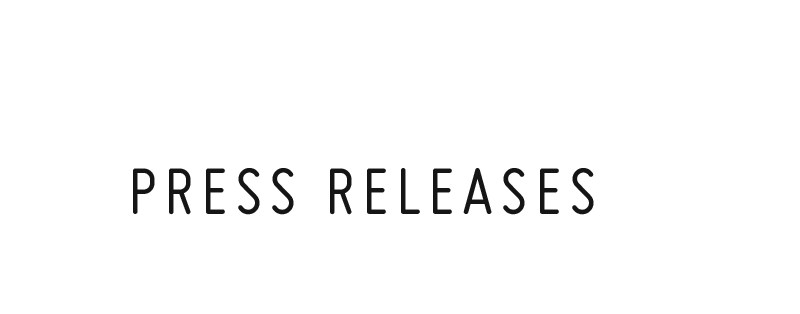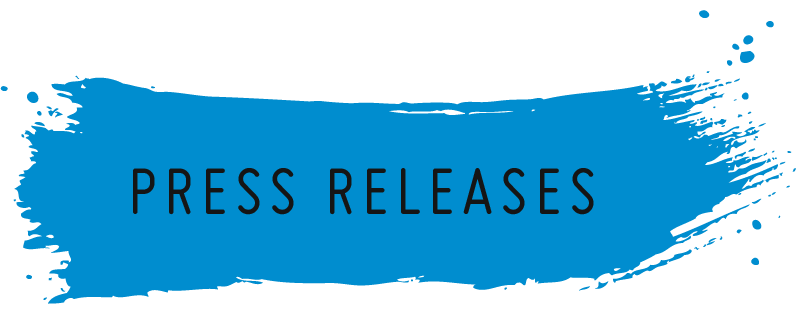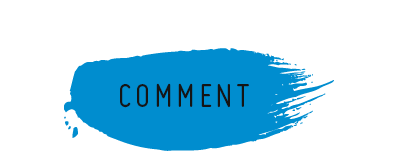- 3D Print Bureau
- 6K
- Agmatix
- Airwayz
- AM-Flow
- Appadda
- Caracol
- CG Trader
- CyberOptics
- e-Xstream
- GenCell
- GreenEye
- Impossible Objects
- Incus Media
- InkBit
- ITG
- JPB Systeme
- KeyProd
- Landa
- LEO Lane
- Lumet
- Magic Software
- MakerBot
- Marketiger
- Nano Dimension
- Paragon Rapid Technologies
- PearlX
- Plant & Bean
- Redefine Meat
- Replique
- Ripples
- Sakuu Corporation
- SolarEdge
- StoreDot
- Stratasys
- Sunrock
- The Bespoke Group
- Trigo
- UltiMaker
- Xjet
MakerBot METHOD 3D Printers Now Support BASF Forward AM Ultrafuse 316L Stainless Steel Composite Material
Users can explore printing rigid 316L stainless steel parts for industrial applications alongside advanced engineering polymers and composites on METHOD with the MakerBot LABS Experimental Extruder
BROOKLYN, N.Y., February 16, 2021 – MakerBot, a Stratasys company (Nasdaq: SSYS), today announced that the BASF Ultrafuse® 316L Stainless Steel material by Forward AM has been qualified for the MakerBot LABS™ Experimental Extruder[1] for the MakerBot METHOD® 3D printers. With an open materials platform and a growing portfolio of advanced engineering-grade materials, METHOD is now the only industrial desktop 3D printer in its price-class with a heated chamber that can print polymer, composite, and metal materials.
Ultrafuse® 316L Stainless Steel material combines high strength, rigidity and durability needed for a range of applications including functional prototypes and manufacturing tools. Available using the MakerBot LABS GEN 2 Experimental Extruder, this metal-polymer composite material provides METHOD users with an accessible and cost-effective option to experiment with metal 3D printing applications without making the significant investment typically needed for a dedicated metal 3D printing solution. 3D printing stainless steel parts can also shorten the time it takes to produce parts, further reducing operational costs compared to traditional methods. METHOD’s heated chamber and ability to control the speed at which a part cools down during the printing process can also help reduce the risk of delamination.
Once the part is printed with BASF Forward AM Ultrafuse® 316L, it can then be sent out to post-processing or specialized manufacturing facilities for debinding and sintering, which turns the part printed with the composite material into solid stainless steel. This process allows users to create stainless steel parts without investing in expensive debinding and sintering equipment. Final parts can achieve up to 96%[2] of the density of pure 316L metal material. Users can produce lightweight, hollow metal parts with high tensile strength compared to polymers that would be difficult to produce in other ways.
“Ultrafuse Metal Filaments removed the barriers between metal 3D printing and users to make the technology more accessible to a larger audience. We are very excited to have our Ultrafuse 316L part of the MakerBot LABS program. We aim to add our recently launched Ultrafuse 17-4 PH filament, with the Ultrafuse 316L to make our entire portfolio accessible to MakerBot users,” said Firat Hizal, Head of Metal Systems Group, BASF 3D Printing Solutions.
“We are excited to have MakerBot METHOD 3D printers join the metal 3D printing ecosystem that we’ve built alongside BASF Forward AM. Making 3D printing more accessible has always been a major goal at MatterHackers, and having reliable desktop printers like the METHOD and METHOD X that are capable of printing real metal parts affordably is a huge step forward,” said Dave Gaylord, vice president of Product and Technology at MatterHackers.
“Our customers have expressed interest in exploring metal 3D printing but have been deterred by the high costs and extensive processes of traditional metal 3D printing solutions. By supporting a metal filament as part of the MakerBot LABS program, customers now have an easier and more affordable way to experiment with 3D printing metal before investing in a full printing, debinding, and sintering solution,” said Johan-Till Broer, vice president of Product Development, MakerBot.
Ultrafuse® 316L material properties make it ideal for a variety of manufacturing tools, jigs and fixtures, and end-use parts, such as workholdings that need to withstand high temperatures; brackets that require high strength and custom designs for specialty machinery; or robotic grippers that need to be strong, lightweight, and wear resistant.
Processing tickets for debinding and sintering are available through Matterhackers, a leading material and 3D printer reseller in the U.S. MatterHackers is an Ultrafuse® 316L authorized reseller, and also offers build plate adhesives needed to print the material and design consultation, which is highly recommended due to the special design requirements for this material.
Ultrafuse® 316L and additional debinding and sintering options are available through authorized resellers.
The MakerBot LABS GEN 2 Experimental Extruder enables users to print with a diverse list of third-party materials on METHOD, opening the possibilities of new and different applications. With the METHOD platform, users can print engineering-grade plastics and carbon fiber materials, while also exploring applications with experimental metal 3D printing solutions. METHOD’s modular platform lets users easily switch between six different extruders that allow them to print different base and model materials. MakerBot is continuing to identify additional industrial 3D printing materials for the METHOD platform.
For more information, visit http://www.makerbot.com/metal.
[1] The MakerBot LABS Experimental Extruder for METHOD is an experimental product and is not covered under limited warranty or MakerCare.
[2] Result is based on testing conducted by Forward AM on the METHOD 3D printer with Ultrafuse® 316L material and specified print parameters
-
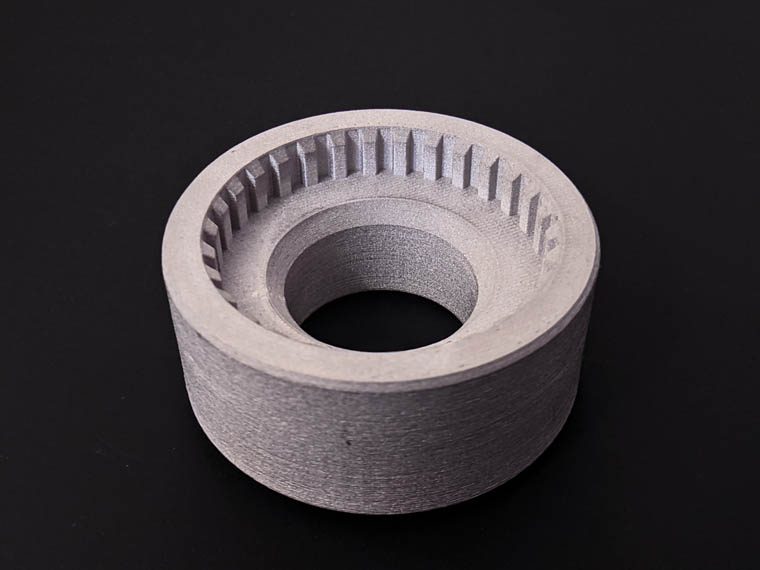 BASF Ultrafuse® 316L Stainless Steel material by Forward AM has been qualified for the MakerBot LABS™ Experimental Extruder for the MakerBot METHOD® 3D printers
BASF Ultrafuse® 316L Stainless Steel material by Forward AM has been qualified for the MakerBot LABS™ Experimental Extruder for the MakerBot METHOD® 3D printers
Click here to download 300dpi images
Les imprimantes 3D MakerBot METHOD sont désormais compatibles avec le matériau composite à base d’acier inoxydable BASF Forward AM Ultrafuse 316L
Les utilisateurs peuvent explorer l’impression de pièces rigides en acier inoxydable 316L pour les applications industrielles, en plus des polymères et composites d’ingénierie avancés, avec l’extrudeuse expérimentale MakerBot LABS sur METHOD
BROOKLYN, New York, 16 février 2021 – MakerBot, une société du groupe Stratasys (Nasdaq : SSYS), a annoncé aujourd’hui la qualification du matériau à base d’acier inoxydable BASF Ultrafuse® 316L de Forward AM pour l’extrudeuse expérimentale MakerBot LABS™[1] des imprimantes 3D MakerBot METHOD®. Avec une plateforme ouverte et une gamme croissante de matériaux d’ingénierie avancés, METHOD est désormais la seule imprimante 3D de bureau industrielle de sa catégorie dotée d’une enceinte chauffée capable d’imprimer des polymères, des composites et des matériaux métalliques.
Le matériau à base d’acier inoxydable Ultrafuse® 316L associe la robustesse, la rigidité et la durabilité nécessaires pour toute une série d’applications, y compris les prototypes fonctionnels et les outils de fabrication. Compatible avec l’extrudeuse expérimentale MakerBot LABS GEN 2, ce matériau composite métal-polymère offre aux utilisateurs de METHOD une option accessible et rentable pour expérimenter avec des applications d’impression 3D métal sans l’investissement considérable généralement requis pour une solution dédiée. L’impression 3D de pièces en acier inoxydable peut aussi accélérer les délais de production pour réduire encore les coûts opérationnels par rapport aux méthodes traditionnelles. L’enceinte chauffée de METHOD et le contrôle de la vitesse de refroidissement des pièces pendant le processus d’impression peut également contribuer à limiter le risque de délaminage.
Une fois la pièce imprimée avec BASF Forward AM Ultrafuse® 316L, elle peut être envoyée aux installations de post-traitement ou de fabrication spécialisée pour procéder au déliantage et au frittage, ce qui convertit la pièce imprimée à l’aide d’un matériau composite en acier inoxydable robuste. Ce procédé permet aux utilisateurs de créer des pièces en acier inoxydable sans avoir à investir dans un équipement coûteux de déliantage et de frittage. Les pièces finales peuvent atteindre jusqu’à 96 %[2] de la densité du matériau 316L en métal pur. Les utilisateurs peuvent ainsi produire des pièces métalliques légères et creuses avec une résistance à la traction élevée par rapport aux polymères, difficiles à produire autrement.
« Les filaments métalliques Ultrafuse ont levé les barrières entre l’impression 3D métal et les utilisateurs pour rendre la technologie plus accessible à un public plus large. Nous sommes ravis que notre Ultrafuse 316L intègre le programme MakerBot LABS. Nous avons pour objectif d’ajouter notre nouveau filament Ultrafuse 17-4 PH à l’Ultrafuse 316L afin de rendre l’intégralité de notre gamme accessible aux utilisateurs de MakerBot », souligne Firat Hizal, directeur de Metal Systems Group, BASF 3D Printing Solutions.
« Nous nous réjouissons que les imprimantes 3D MakerBot METHOD rejoignent l’écosystème d’impression 3D métal que nous avons créé en collaboration avec BASF Forward AM. Rendre l’impression 3D plus accessible a toujours compté parmi les principales missions de MatterHackers, et disposer d’imprimantes de bureau fiables comme la METHOD et la METHOD X, capables d’imprimer de vraies pièces métalliques à un coût abordable, constitue un immense pas en avant », affirme Dave Gaylord, vice-président Produit et Technologie chez MatterHackers.
« Nos clients se sont montrés intéressés par l’impression 3D métal, mais les coûts élevés et les processus complexes des solutions traditionnelles sont dissuasifs. En intégrant un filament métallique au programme MakerBot LABS, les clients disposent désormais d’un moyen plus facile et plus abordable d’expérimenter l’impression 3D métal avant d’investir dans une solution complète d’impression, de déliantage et de frittage », explique Johan-Till Broer, vice-président Développement de produit chez MakerBot.
Les propriétés du matériau Ultrafuse® 316L le rendent idéal pour de nombreux outils de fabrication, gabarits, éléments de prototypes et pièces finales, par exemple des dispositifs de fixation résistants aux hautes températures, des supports robustes et conçus sur mesure pour les machines spécialisées, ou des pinces robotisées solides, légères et résistantes à l’usure.
Des tickets de traitement pour le déliantage et le frittage sont également disponibles sur Matterhackers, un des principaux revendeurs de matériaux et d’imprimantes 3D aux États-Unis. MatterHackers est un revendeur Ultrafuse® 316L autorisé, et il propose aussi des adhésifs pour les plaques de construction nécessaires à l’impression du matériau et à la consultation des conceptions, fortement recommandés en raison des exigences particulières de conception de ce matériau.
Ultrafuse® 316L et des options supplémentaires de déliantage et de frittage sont disponibles à travers les revendeurs autorisés.
L’extrudeuse expérimentale MakerBot LABS GEN 2 permet aux utilisateurs d’imprimer à l’aide d’une liste complète de matériaux tiers sur METHOD, pour un large choix d’applications innovantes et variées. Grâce à la plateforme METHOD, les utilisateurs peuvent imprimer des plastiques et des fibres de carbone d’ingénierie, tout en explorant les applications des solutions expérimentales d’impression 3D métal. La plateforme modulaire de METHOD permet aux utilisateurs de basculer facilement entre les six extrudeuses pour imprimer différents matériaux de base et de modèles. MakerBot continue d’étudier d’autres matériaux d’impression 3D industrielle pour la plateforme METHOD.
Pour plus d’informations, consultez le site Web http://www.makerbot.com/metal.
[1] L’extrudeuse expérimentale MakerBot LABS pour METHOD est un produit expérimental qui n’est pas couvert par une garantie limitée ou MakerCare.
[2] Le résultat repose sur des tests effectués par Forward AM sur l’imprimante 3D METHOD avec le matériau Ultrafuse® 316L et des paramètres d’impression donnés.
-
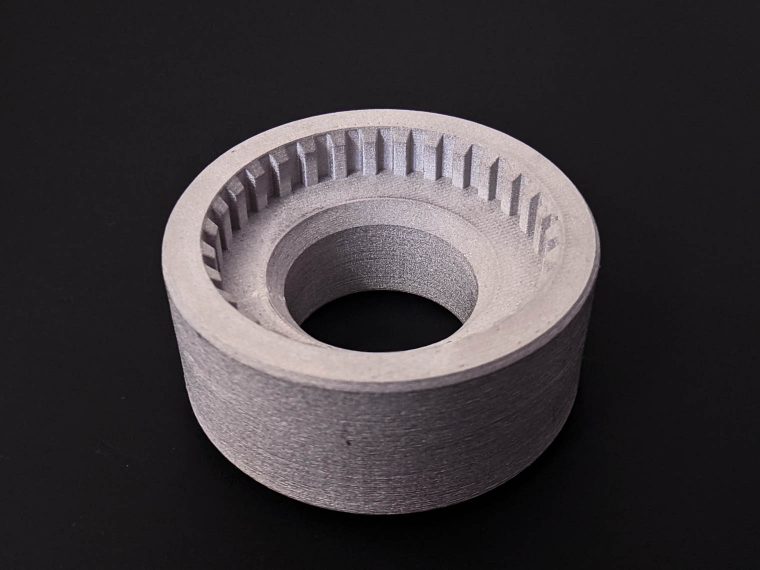 Le matériau en acier inoxydable BASF Ultrafuse® 316L de Forward AM a été qualifié pour l'extrudeuse expérimentale MakerBot LABS ™ pour les imprimantes 3D MakerBot METHOD®
Le matériau en acier inoxydable BASF Ultrafuse® 316L de Forward AM a été qualifié pour l'extrudeuse expérimentale MakerBot LABS ™ pour les imprimantes 3D MakerBot METHOD®
Click here to download 300dpi images
Ab sofort unterstützen die 3D-Drucker METHOD von MakerBot das Edelstahl-Verbundfilament Ultrafuse 316L von BASF Forward AM
Mit dem MakerBot LABS Experimental Extruder können Anwender jetzt auch starre 316L-Edelstahlteile für industrielle Anwendungen neben technischen Polymeren und Verbundstoffen im METHOD drucken
BROOKLYN, N.Y., 16. Februar 2021 – MakerBot, ein Unternehmen von Stratasys (Nasdaq: SSYS), gab heute bekannt, dass das Edelstahl-Filament BASF Ultrafuse® 316L von Forward AM für den MakerBot LABS™ Experimental Extruder[1] für die 3D-Drucker MakerBot METHOD® qualifiziert worden ist. Dank seiner offenen Materialplattform und der wachsenden Palette von innovativen, technisch anspruchsvollen Materialien ist METHOD jetzt der einzige 3D-Industriedrucker in seiner Preisklasse mit einer beheizten Baukammer, der Polymere, Verbundstoffe und Metallfilamente drucken kann.
Das Edelstahl-Filament Ultrafuse® 316L vereint die Stärke, Steifigkeit und Strapazierfestigkeit, die für diverse Anwendungen, wie u. a. Funktionsprototypen und Werkzeuge für die Fertigung, notwendig sind. Mit diesem zur Verwendung mit dem MakerBot LABS GEN 2 Experimental Extruder erhältlichen Metall-Polymer-Verbundfilament verfügen Anwender über eine kostengünstige Möglichkeit zum Experimentieren mit 3D-Metalldruckanwendungen, ohne in eine spezielle Lösung für den 3D-Metalldruck investieren zu müssen. Der 3D-Druck von Edelstahlteilen verkürzt auch den Zeitaufwand für die Teileherstellung und trägt so zu einer weiteren Verringerung der Betriebskosten gegenüber herkömmlichen Methoden bei. Außerdem verringern die beheizte Baukammer des METHOD und seine Fähigkeit zur Kontrolle der Geschwindigkeit, mit der ein Teil beim Druckvorgang abkühlt, das Risiko der Schichtablösung.
Nach dem Drucken mit BASF Forward AM Ultrafuse® 316L kann das Teil zum Entbinden und Sintern an Nachverarbeitungs- oder spezielle Fertigungsanlagen weitergeleitet werden. Beim Entbinder- und Sinterprozess werden die mit Verbundstoff gedruckten Teile zu Teilen aus massivem Edelstahl verarbeitet, wodurch sich die Investition in kostspielige Entbinderungs- und Sinteranlagen erübrigt. Die fertigen Teile können eine Dichte von bis zu 96 %[2] des reinen 316L-Metallfilaments erreichen. Anwender können leichte, hohle Metallteile mit hoher Zugfestigkeit gegenüber Polymeren herstellen, die sich auf andere Weise kaum fertigen ließen.
„Das Ultrafuse-Metallfilament eröffnet völlig neue Möglichkeiten für den 3D-Metalldruck. Wir freuen uns sehr, dass unser Ultrafuse 316L in das MakerBot LABS-Programm aufgenommen wurde. Zusätzlich zu Ultrafuse 316L möchten wir auch unser kürzlich auf den Markt gebrachtes Metallfilament Ultrafuse 17-4 PH ergänzen, damit MakerBot-Anwender unser gesamtes Sortiment nutzen können“, so Firat Hizal, Head of Metal Systems Group bei BASF 3D Printing Solutions.
„Wir freuen uns sehr über die Aufnahme der MakerBot METHOD 3D-Drucker in das 3D-Metalldruck-Ökosystem, das wir zusammen mit BASF Forward AM entwickelt haben. Wir bei MatterHackers haben immer schon das Ziel verfolgt, den 3D-Druck einem breiteren Anwenderpublikum anbieten zu können. Vor diesem Hintergrund sind zuverlässige Desktop-Drucker, wie der METHOD und der METHOD X, die echte Metallteile erschwinglich drucken können, ein enormer Fortschritt“, erklärte Dave Gaylord, Vice President of Product & Technology bei MatterHackers.
„Unsere Kunden haben Interesse am 3D-Metalldruck bekundet, waren jedoch abgeschreckt von den hohen Kosten und aufwendigen Prozessen herkömmlicher Lösungen für den 3D-Metalldruck. Da das MakerBot LABS-Programm jetzt auch ein Metallfilament umfasst, haben Kunden nun eine einfachere und kostengünstigere Möglichkeit, um den 3D-Metalldruck auszuprobieren, bevor sie in eine Druck-, Entbinder- und Sinter-Komplettlösung investieren“, so Johan-Till Broer, Vice President of Product Development bei MakerBot.
Aufgrund seiner Eigenschaften ist Ultrafuse® 316L hervorragend für zahlreiche Werkzeuge, Montagevorrichtungen und Befestigungen sowie Endbenutzerteile geeignet. Dazu gehören Spannvorrichtungen, die eine hohe Temperaturbeständigkeit haben müssen, Halterungen mit hoher Festigkeit und kundenspezifischem Design für Spezialmaschinen, oder Greifroboter, die stark, strapazierbar, leicht, verschleiß- und abriebfest sein müssen.
Über MatterHackers, einen führenden Händler von Materialien und 3D-Druckern in den USA, sind Verarbeitungstickets für das Entbinden und Sintern erhältlich. MatterHackers ist ein autorisierter Händler für Ultrafuse® 316L und bietet auch die zum Drucken des Verbundwerkstoffs notwendigen Bauplatten-Kleber und Beratungsleistungen, die aufgrund der hohen Designanforderungen für dieses Material dringend empfohlen werden.
Ultrafuse® 316L und weitere Entbinder- und Sinteroptionen sind über autorisierte Vertriebspartner erhältlich.
Der MakerBot LABS GEN 2 Experimental Extruder erweitert die Materialauswahl für den METHOD auf Materialien von Drittanbietern und eröffnet so neue und andere Anwendungsmöglichkeiten. Mit der METHOD-Plattform können Benutzer fertigungstaugliche Bauteile aus Kunststoff und Glasfaser-Verbundstoffen herstellen und gleichzeitig Anwendungsmöglichkeiten mit den experimentellen 3D-Metalldruck-Lösungen erkunden. Die modulare Plattform des METHOD ermöglicht den problemlosen Wechsel zwischen sechs verschiedenen Extrudern für den Druck mit verschiedenen Basis- und Modellmaterialien. Kontinuierlich erweitert MakerBot sein Sortiment an industriellen 3D-Druckmaterialien für die METHOD-Plattform.
Weitere Informationen finden Sie auf der Website http://www.makerbot.com/metal bzw. https://www.makerbot.com/de/3d-printers/method/metal-3d-printing/.
[1] Der MakerBot LABS Experimental Extruder für METHOD ist ein experimentelles Produkt und nicht durch die beschränkte Garantie oder MakerCare abgedeckt.
[2] Das Ergebnis basiert auf Tests, die Forward AM mit dem Ultrafuse® 316L-Material im METHOD 3D-Drucker und bestimmten Druckparametern durchgeführt hat.
-
 Das Edelstahl-Filament BASF Ultrafuse® 316L von Forward AM ist für den MakerBot LABS™ Experimental Extruder der MakerBot METHOD® qualifiziert
Das Edelstahl-Filament BASF Ultrafuse® 316L von Forward AM ist für den MakerBot LABS™ Experimental Extruder der MakerBot METHOD® qualifiziert
Click here to download 300dpi images
Le stampanti 3D METHOD di MakerBot supportano ora il materiale composito in acciaio inossidabile 316L BASF Forward AM Ultrafuse
Con l’estrusore sperimentale MakerBot LABS, gli utenti possono esplorare la stampa di parti rigide in acciaio inossidabile 316L per applicazioni industriali unitamente a polimeri di ingegneria avanzata e materiali compositi sulla piattaforma METHOD
BROOKLYN, N.Y., 16 febbraio 2021 – MakerBot, una società del gruppo Stratasys (Nasdaq: SSYS), ha annunciato in data odierna che il materiale in acciaio inossidabile 316L BASF Ultrafuse® di Forward AM si è qualificato per l’estrusore sperimentale MakerBot LABS™[1] destinato alle stampanti 3D METHOD® di MakerBot. Grazie a una piattaforma di materiali aperta e a un portafoglio crescente di materiali avanzati di grado ingegneristico, METHOD è ora l’unica stampante 3D desktop industriale nella sua fascia di prezzo con una camera riscaldata in grado di stampare materiali polimerici, compositi e metallici.
Il materiale in acciaio inossidabile 316L Ultrafuse® combina l’alta resistenza, la rigidità e la durata necessarie per una serie di applicazioni, tra cui prototipi funzionali e strumenti di produzione. Disponibile utilizzando l’estrusore sperimentale LABS GEN 2 di MakerBot, questo materiale composito di metallo e polimeri fornisce agli utenti della piattaforma METHOD un’opzione accessibile e conveniente per sperimentare applicazioni di stampa 3D in metallo senza i significativi investimenti tipicamente necessari per una soluzione per la stampa 3D in metallo dedicata. Le parti in acciaio inossidabile destinate alla stampa 3D possono inoltre ridurre il tempo necessario per la produzione, diminuendo ulteriormente i costi operativi rispetto ai metodi tradizionali. La camera riscaldata della piattaforma METHOD e la capacità di controllare la velocità di raffreddamento delle parti durante il processo di stampa possono inoltre contribuire a ridurre il rischio di delaminazione.
Una volta che la parte è stampata con il materiale 316L BASF Forward AM Ultrafuse®, può essere inviata per la post-lavorazione o a strutture di produzione specializzate per il deceraggio e la sinterizzazione, che trasformano la parte stampata con il materiale composito in acciaio inossidabile solido. Questo processo permette agli utenti di creare parti in acciaio inossidabile senza dover investire in costose attrezzature di deceraggio e sinterizzazione. Le parti finali possono raggiungere fino al 96%[2] della densità del materiale metallico 316L puro. Gli utenti possono produrre parti metalliche leggere e cave con un’alta resistenza alla trazione rispetto ai polimeri, che sarebbe difficile produrre in altri modi.
“I filamenti metallici Ultrafuse hanno rimosso le barriere tra la stampa 3D in metallo e gli utenti per rendere la tecnologia maggiormente accessibile a un pubblico più ampio. Siamo entusiasti del fatto che il nostro Ultrafuse 316L sia entrato a far parte del programma LABS di MakerBot. Puntiamo ad aggiungere il nostro filamento Ultrafuse 17-4 PH, lanciato di recente, insieme all’Ultrafuse 316L, per rendere il nostro intero portafoglio accessibile agli utenti MakerBot”, ha dichiarato Firat Hizal, responsabile del Metal Systems Group presso BASF 3D Printing Solutions.
“Siamo entusiasti che le stampanti 3D METHOD di MakerBot entrino a far parte dell’ecosistema di stampa 3D in metallo che abbiamo costruito insieme a BASF Forward AM. Rendere la stampa 3D più accessibile è sempre stato uno dei principali obiettivi di MatterHackers, e poter disporre di stampanti desktop affidabili come la METHOD e la METHOD X, in grado di stampare parti in metallo reale a prezzi accessibili, rappresenta un enorme passo avanti”, ha dichiarato Dave Gaylord, vice-presidente per il segmento Product and Technology presso MatterHackers.
“I nostri clienti hanno espresso interesse nei confronti della possibilità di esplorare la stampa 3D in metallo, ma sono stati scoraggiati dai costi elevati e dai complessi processi delle tradizionali soluzioni per la stampa 3D in metallo. Supportando un filamento metallico nell’ambito del programma LABS di MakerBot, i clienti dispongono ora di un modo più facile e conveniente per sperimentare la stampa 3D del metallo prima di investire in una soluzione completa di stampa, deceraggio e sinterizzazione”, ha spiegato Johan-Till Broer, vice-presidente del segmento Product Development presso MakerBot.
Le proprietà del materiale Ultrafuse® 316L lo rendono ideale per un’ampia gamma di strumenti di produzione, maschere e attrezzature, nonché per parti destinate agli utenti finali, come i sistemi di bloccaggio che devono resistere alle alte temperature, staffe che richiedono alta resistenza e design personalizzati per macchinari speciali, o pinze robotiche che devono essere robuste, leggere e resistenti all’usura.
Ticket di lavorazione per il deceraggio e la sinterizzazione sono disponibili tramite Matterhackers, un rivenditore leader di materiali e stampanti 3D negli Stati Uniti. MatterHackers è un rivenditore autorizzato di Ultrafuse® 316L e offre inoltre adesivi per le lastre di build necessari per stampare il materiale, nonché consulenza per la progettazione, vivamente consigliata per via dei requisiti speciali di design per questo materiale.
Ultrafuse® 316L e ulteriori opzioni di deceraggio e sinterizzazione sono disponibili tramite rivenditori autorizzati.
L’estrusore sperimentale LABS GEN 2 di MakerBot permette agli utenti di stampare con una gamma diversificata di materiali di terze parti sulla piattaforma METHOD, aprendo la strada a possibilità di nuove e diverse applicazioni. Con la piattaforma METHOD, gli utenti possono stampare plastiche di grado ingegneristico e materiali in fibra di carbonio, mentre esplorano anche applicazioni con soluzioni sperimentali di stampa 3D in metallo. La piattaforma modulare METHOD permette agli utenti di alternare facilmente sei diversi estrusori che consentono di stampare materiali diversi per la base e il modello. MakerBot continua a individuare ulteriori materiali industriali per la stampa 3D destinati alla piattaforma METHOD.
Per maggiori informazioni, visitare il sito http://www.makerbot.com/metal.
[1] L’estrusore sperimentale MakerBot LABS per la piattaforma METHOD è un prodotto sperimentale e non è coperto da garanzia limitata o MakerCare.
[2] Il risultato si basa su test condotti da Forward AM sulla stampante METHOD 3D con materiale Ultrafuse® 316L e parametri di stampa prestabiliti
-
 Il materiale BASF Ultrafuse® 316L Stainless Steel di Forward AM è stato qualificato per l'estrusore sperimentale MakerBot LABS™ per le stampanti 3D MakerBot METHOD®.
Il materiale BASF Ultrafuse® 316L Stainless Steel di Forward AM è stato qualificato per l'estrusore sperimentale MakerBot LABS™ per le stampanti 3D MakerBot METHOD®.
Click here to download 300dpi images
